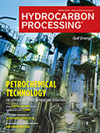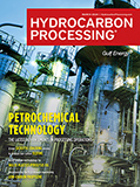Greenhouse Gases
India's Gujarat signs investment pacts worth $18.75 B with several firms
Companies across many sectors signed initial investment pacts totaling $18.75 B for projects they will build in India's western state of Gujarat, including green hydrogen and green ammonia facilities.
EU to investigate Chinese biodiesel dumping allegation
The European Union said it would begin an anti-dumping investigation into biodiesel imports from China, which the bloc's industry says has slashed domestic production.
Höegh Autoliners and VARO partner to accelerate sustainable shipping
VARO Energy and Höegh Autoliners announced a strategic partnership aimed at advancing the decarbonization of maritime sectors. This collaboration focuses on supplying 100% advanced biofuels for deep-sea transportation from Europe, underpinning both companies’ voluntary commitments to superior sustainability standards.
U.S. EPA sends Midwest ethanol expansion request to White House
The U.S. Environmental Protection Agency has asked the White House to approve a rule that would allow expanded sales of higher-ethanol gasoline to be sold in certain Midwestern states, after governors from those states requested it.
Technip Energies to support Dow's net-zero ethylene cracker in Canada with technology and services
Technip Energies has been selected to provide Proprietary Technology, Engineering, and Procurement services for Dow’s net-zero Scope 1 and 2 emissions integrated ethylene cracker in Fort Saskatchewan, Alberta, Canada
Norsk e-Fuel enlists Paul Wurth for FEED study on first e-fuel plant with Axens Technologies
Norsk e-Fuel selects SMS group subsidiary Paul Wurth to engineer and design one of the worldwide first industrial sized e-Fuel production sites in Mosjøen, Norway.
Neste's Finnish crude oil refinery will gradually become a hub for renewable and circular solutions
Neste has completed the strategic study launched in September 2022, and begins a gradual transformation of its crude oil refinery in Porvoo, Finland into a leading renewable and circular solutions refining hub.
Bain-backed biofuels refiner ties up with China firm to source feedstock
Bain Capital-backed biofuels refiner EcoCeres has tied up with a waste management firm backed by the Chinese city of Shenzhen to source feedstock as it expands production of low-carbon fuels to meet fast-growing demand.
Elon Musk says oil and gas should not be demonized
Oil and gas should not be demonized in the medium-term, Elon Musk, the founder of electric car maker Tesla, but he also said it was important to reduce carbon emissions to preserve the planet.
Fortescue gets €200 MM for Norway green ammonia plant
Australia's Fortescue said it received €200 MM from the European Union for its Holmaneset Project, a flagship green ammonia plant in Norway.

- China's March jet fuel exports jump 77.4% from a year earlier 4/18
- Nigeria strikes deal with Shell to supply $3.8-B methanol project 4/18
- Singapore fuel oil stockpiles rebound to 8-week high on higher imports 4/18
- Clariant launches new CATOFIN 312 propane dehydrogenation catalyst 4/18
- Solvay inaugurates new blowing agent production unit in Rosignano, Italy 4/18
- Meridian Energy Group’s Davis Refinery Project in North Dakota (U.S.) will be the world’s first net-zero carbon refinery 4/17




